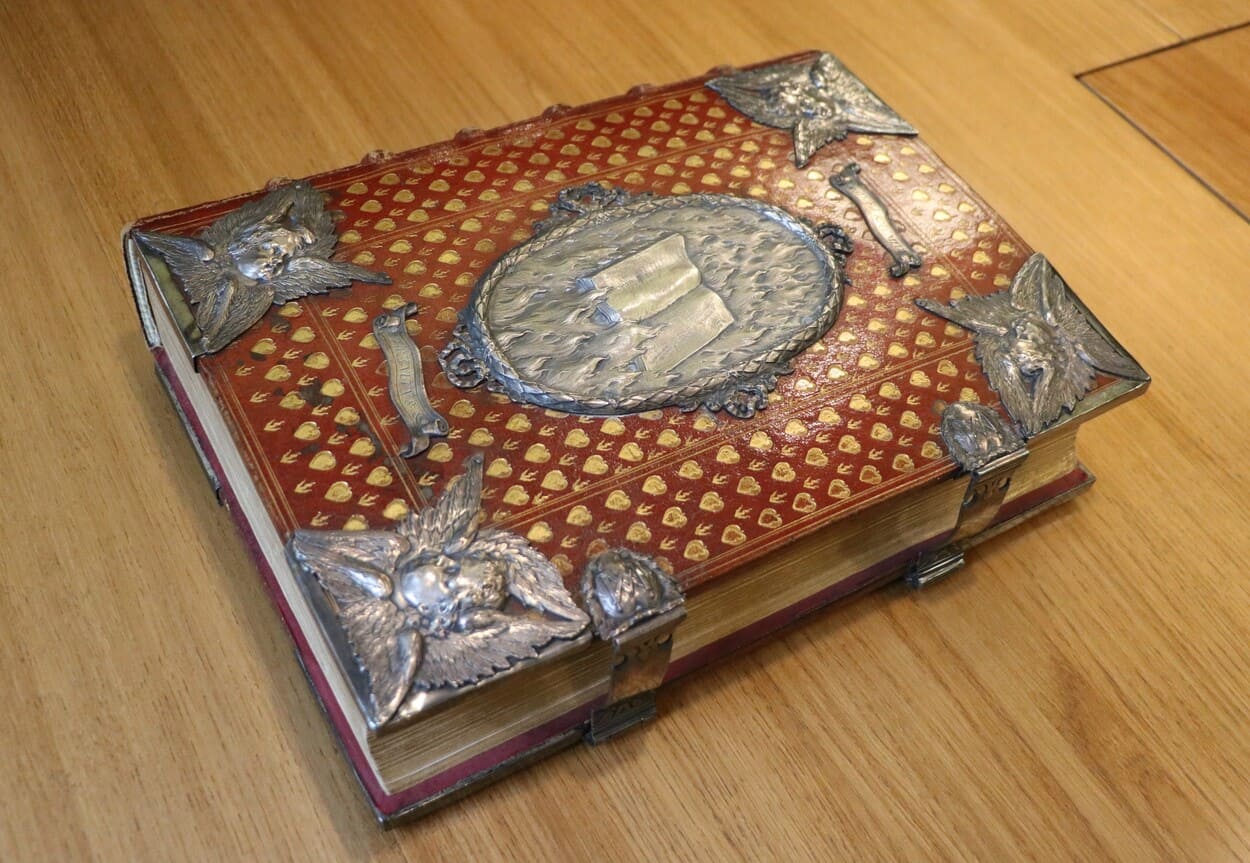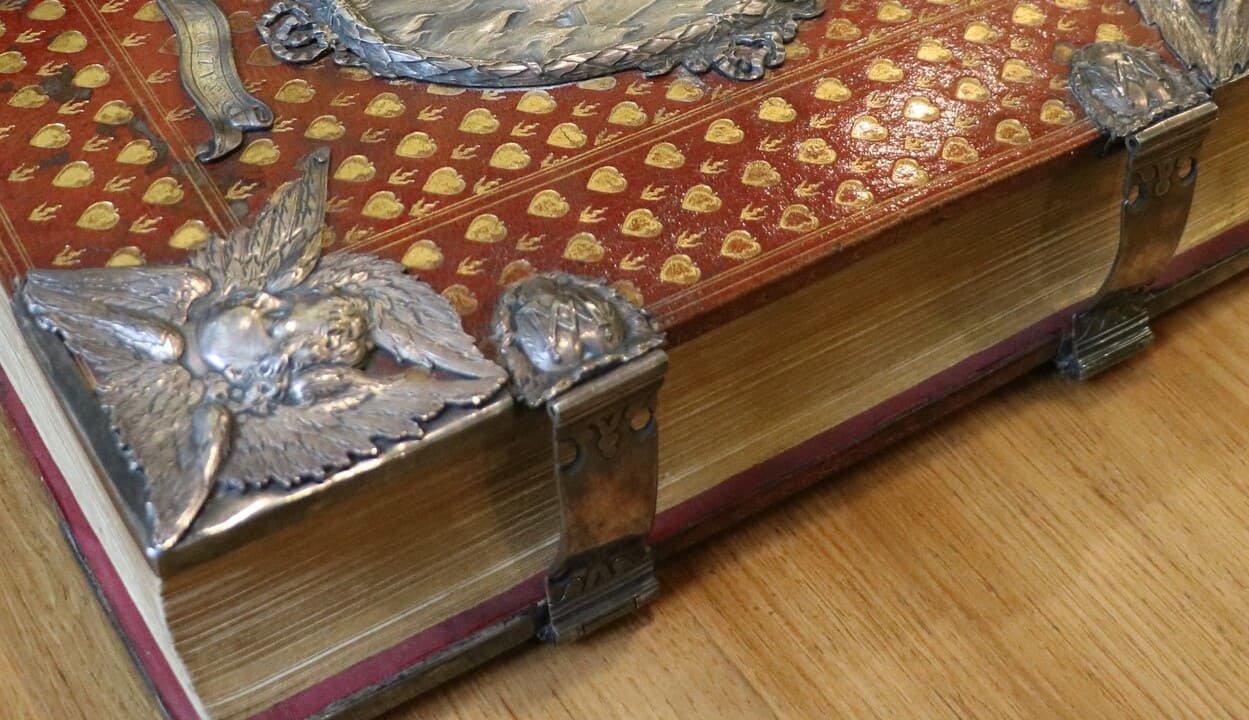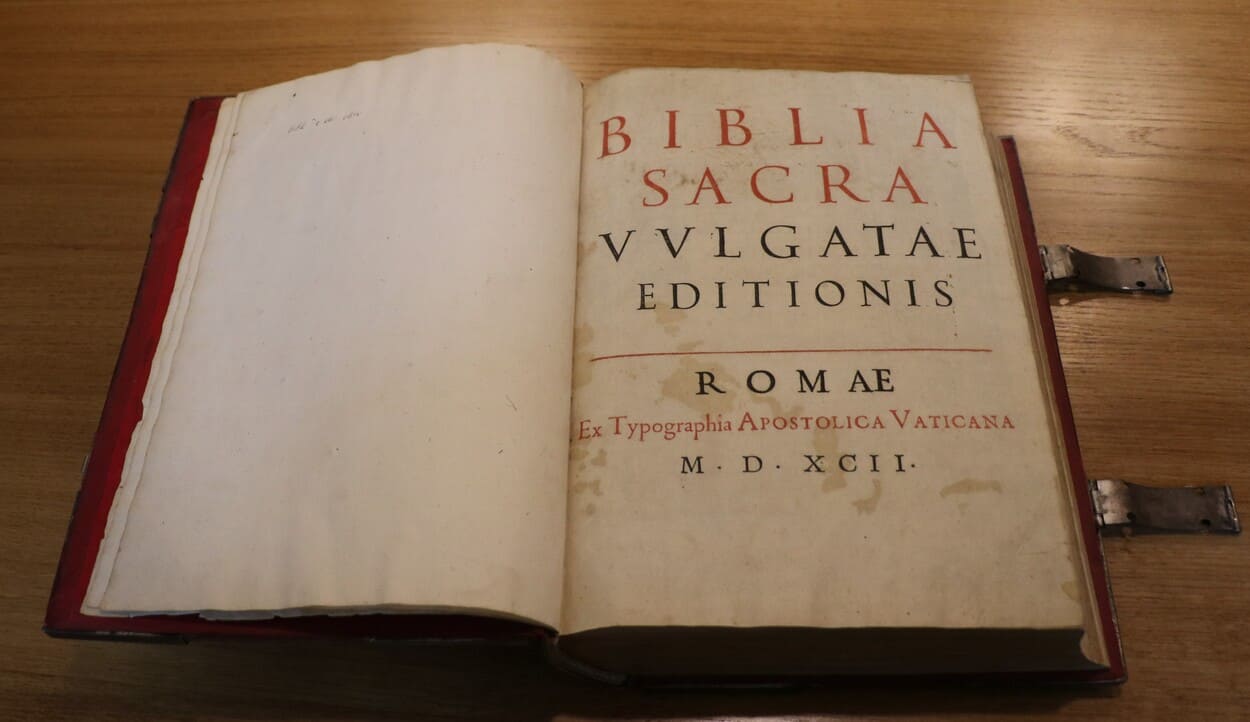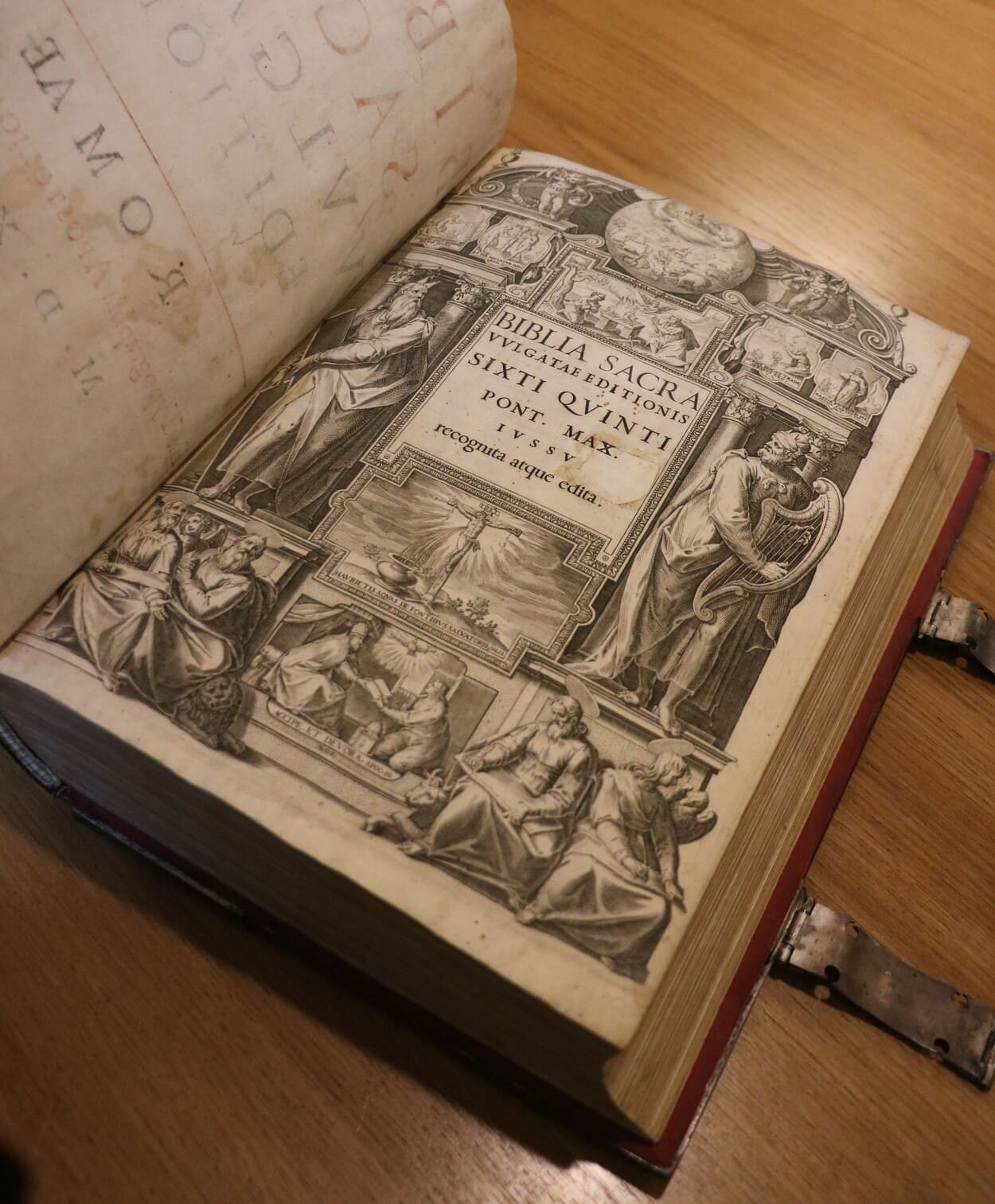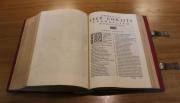Jean-Jacques Olier and the Word of God
Father Olier’s Bible is well known to the priests of Saint Sulpice, who never fail to exhibit it at each of their General Assemblies. Through this gesture, which has become virtually a ritual, the Sulpicians participate in the spiritual tradition of their founder, whose devotion to the Sacred Scriptures was well known within the first community of the Séminaire de Saint-Sulpice.
Jean-Jacques Olier wanted to express this respect and adoration of the Word of God by having his Bible magnificently adorned. Based on The Spirit of Father Olier that we owe to Louis Tronson (mss 1603, 1604, 1605), Étienne-Michel Faillon said that Olier "always placed his Bible on a little throne, which he had placed in his room for this purpose; whenever he entered or left the room, he deeply reverenced the spirit of God residing in that divine book.”
First of all, it has a full leather binding in Moroccan red with a full composition of filigree and gilt ironed decorations distributed on the upper and lower covers. These gold embossed lines represent a succession of hearts and small flames, framed in the center and at the ends by a triple gilded fillet.
The back has six columns, adorned with a range of stylized floral motifs with intermittent lines with filigree decorations framed by a double gilt fillet underlined with triple dots. On the back is the printed title: "BIBLIA SACRA" gilded in the second intermediate line. In the design, one can see a palette of stylized floral motifs, as well as on the edges of the binding, which is very thick.
The whole is decorated with chiseled silver reliefs placed at the four corners, depicting six-winged seraphim, seemingly contemplating the Word of God, represented in the central medallion in the form of an open book surrounded by burning flames (upper plate). The imagery comes from the Book of Ezekiel.
On the lower cover, we find the same composition made of seraphs at the four corners of the binding. The latter turn their gaze towards the Word of God, represented here in the form of an immolated lamb, lying on a cross, as if nestled in the heart of a sun emanating magnificent rays.
Two pairs of chased silver streamers are placed above and below the medallions depicting the Word of God. We can read the following inscriptions: “Adora et comede volumen istud” (Adore and eat this scroll) and “Par cultus et amor utrique” (Equal worship and love for both) which invite us to adore the divine Word manifested in the Scriptures and in the Person of the Son.
The inside covers of the binding are lined with purple velvet and satin.
The work is embellished with clasps, in the same metal, on which one can recognize the initials of two intertwined letters (AM) of the Auspice Maria.
We should note that the choice of motifs commissioned by Jean-Jacques Olier, in particular that of the heart used on the binding or on the clasps, indicates a development of devotion to the Sacred Heart of Jesus, even prior to the apparitions to Marguerite-Marie Alacoque in Paray-le-Monial in 1673. We could even say that this devotion characterizes in a certain way the currents of the French School, as we see already in Saint Jean Eudes from 1634!
Now let's talk about the text. It is the Roman edition of the Bible in folio format, published in 1592, called the Sixto-Clementine Vulgate. The prestige of this edition, considered a rare book today, says something about Father Olier's esteem for the Word. Its use inscribes our founder in the direct line of the Council of Trent, which had admitted the need to establish a new critical version of the Vulgate of Saint Jerome. The Church therefore made the choice to maintain the use of Latin at a time when the Reformed Tradition no longer hesitated to translate the biblical text into vernacular languages, aided in this by the development of the printing press.
Faced with the rise of the Protestant Reformation, which favored the dissemination of the biblical text to a wide audience through vernacular translations, the Catholic Church wanted to reaffirm the doctrine that the Word of God is transmitted through Scripture, which itself is based on tradition. The Church convened a council at Trent (1545-1563) that approved the authenticity of the Latin Vulgate of Saint Jerome in 1546, which she declared faithful to the original texts. However, the Vulgate was also contested by Renaissance humanists, which led the council fathers to propose a revision of the text. It was not until 1592 that the work was completed under the auspices of Pope Clement VIII. At the same time, mistrust remained with regard to versions translated into vernacular languages, suspected of opening the way to heretical doctrines. This is why the Sixto-Clementine Vulgate can be considered one of the instruments of the so-called Catholic Counter-Reformation.
The first edition of the Sixto-Clementine Vulgate opens with a magnificent frontispiece decorated with vignettes depicting scenes from Genesis and Exodus, through the figures of Moses and David, then the four evangelists with their respective attributes. In the center, Clement VIII gives the Vulgate to the Church with the motto “Accipe et devora” (Take and eat), symbolizing that the divine Word is (spiritual) food.
Mr. Zakaria Hilal is Archivist of the Society of the Priests of Saint Sulpice
Translated by Rev. Father Ronald D. Witherup



